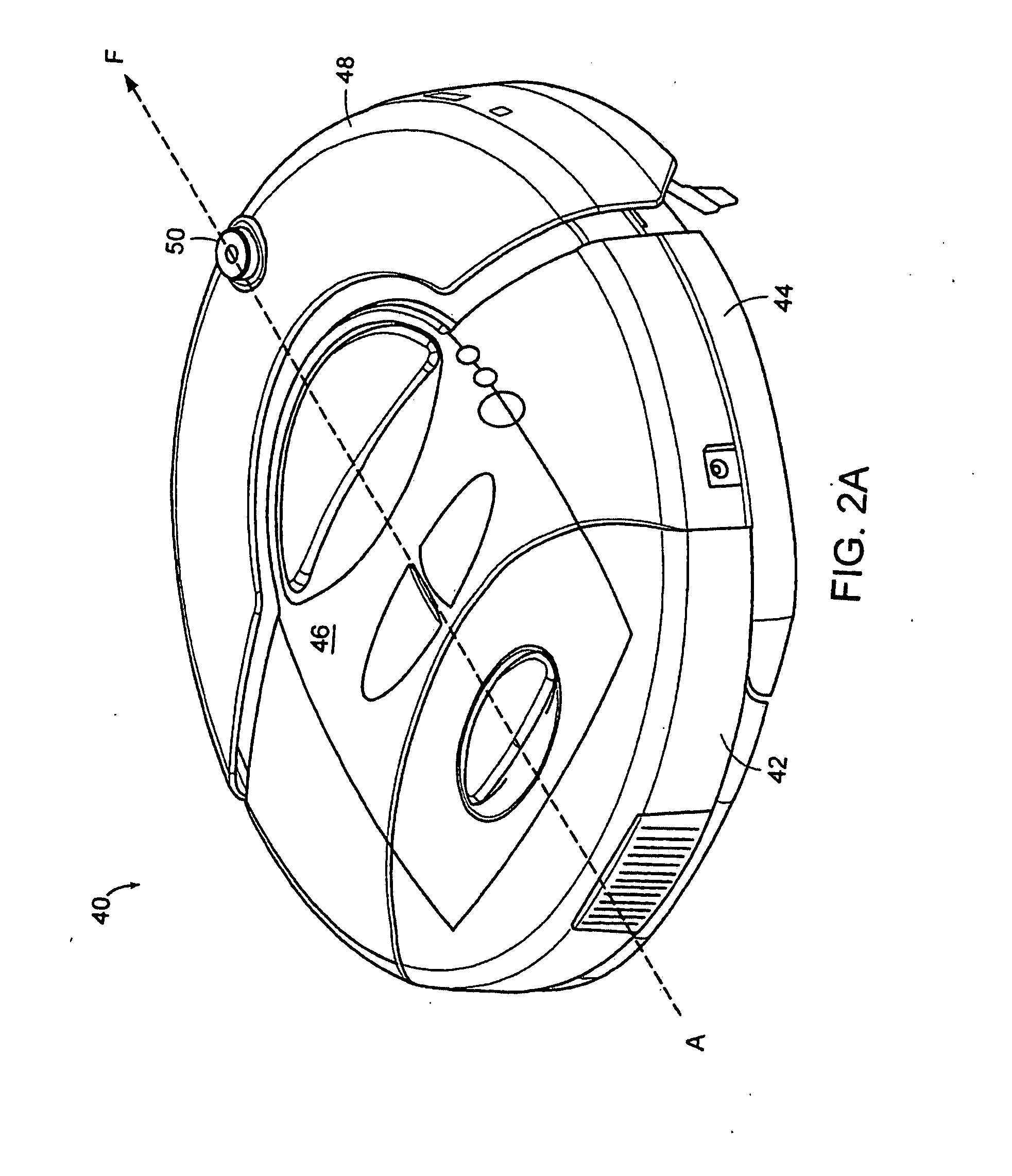Autonomous Robot Auto-Docking and Energy Management Systems and Methods
a technology of autonomous robots and energy management systems, applied in the field of robots, can solve the problems of common, time-consuming, or dangerous, and wires buried below the surface on which the robot operates, and achieve the effects of reducing the application range, and reducing the risk of accidents
- Summary
- Abstract
- Description
- Claims
- Application Information
AI Technical Summary
Benefits of technology
Problems solved by technology
Method used
Image
Examples
Embodiment Construction
[0030]FIG. 1 is a schematic perspective view a base station 10 in accordance with one embodiment of the invention. The base station 10 includes both a substantially horizontal base plate 12 and a substantially vertical backstop 14. The base station 10 may be any of a variety of shapes or sizes, providing sufficient space for the desired components and systems, described below. The base plate 12 is generally parallel to the ground surface on which the base station 10 rests, but may have a slight upwards angle directed toward the backstop 14. By minimizing the angle of rise of the base plate 12, the robotic device (FIGS. 2A-2B) may easily dock with the station 10. Electrical charging contacts 16 are located on a top surface of the base plate 12, allowing them to contact corresponding contacts (FIG. 2B) on the underside of the robotic device. The contacts 16 or the contacts on the robot may be either fixed or compliant. In the depicted embodiment, two contacts 16 (one positive, one neg...
PUM
 Login to View More
Login to View More Abstract
Description
Claims
Application Information
 Login to View More
Login to View More - R&D
- Intellectual Property
- Life Sciences
- Materials
- Tech Scout
- Unparalleled Data Quality
- Higher Quality Content
- 60% Fewer Hallucinations
Browse by: Latest US Patents, China's latest patents, Technical Efficacy Thesaurus, Application Domain, Technology Topic, Popular Technical Reports.
© 2025 PatSnap. All rights reserved.Legal|Privacy policy|Modern Slavery Act Transparency Statement|Sitemap|About US| Contact US: help@patsnap.com



